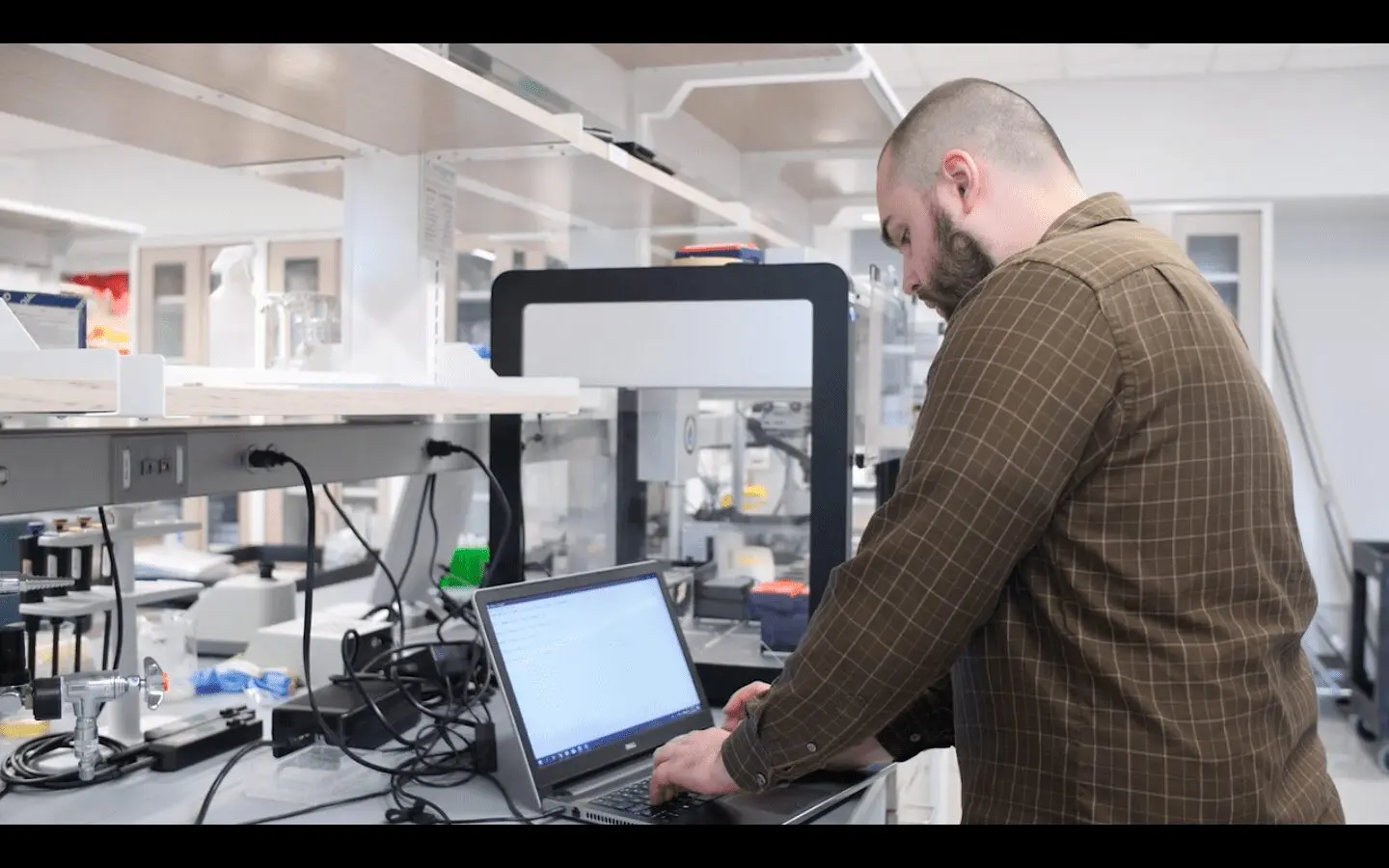
Robots handle repetitive lab tasks so you don’t have to. Here’s how to successfully pitch the idea to your team.
Despite the ominous predictions – and we’ve all heard them! – robots are not here to take your job, or the job of anyone else in your lab. Why? Because you’re highly skilled in ways that robots just can’t replicate.
What robots are here to do is to automate tasks that are simple, time-consuming, repetitive, and, let’s face it, boring. We don’t write numerical data in ledgers any more, we use spreadsheets for calculation. We don’t plan or track cloning procedures on paper, we use software to do it for us. And we can also automate liquid handling.
Here are three things you might not know about the benefits of introducing a pipetting robot into your lab.
Think about PCR. Before thermocyclers, scientists moved samples by hand from water baths of varying temperatures, using timers to keep track of the various cycles. This process took a lot of time and manual effort to complete, and was also prone to errors. But when thermocyclers became common lab equipment, scientists programmed those same temperatures and timers into the machine and were able to walk away from the task, doing other things in the lab while getting a far superior result.
It’s the same with a robot that automates pipetting. You will still need people to plan the workflows, load the samples, and analyze the data once the pipetting is done. But those people will have time to develop more protocols and strategies, plan and execute more experiments, attend more conferences, write more articles, secure more grants – and get better, more consistent results.
With a robot, a person can easily pipette as much as twice as many samples in the same amount of time. It’s simply more efficient due to the robot’s ability to automatically track sample locations and volumes, perform repeat dispensing steps, and plan efficient movement paths. Rather than subtracting a human from your lab, adding a robot is like adding a superpower to your lab team so they can more successfully reach their goals.
The bottom line? More progress plus less time equals faster data analysis, more data gathering, and better research results. It’s an investment in the future of your lab and in keeping your facility relevant among – and perhaps even ahead of – all the competition.
It can be difficult to hire and retain skilled lab techs – they’re in high demand, and they want to do more than pipette. A lot of scientists ask, “Isn’t that what lab techs are for?” Well, sometimes – you need skilled technicians for a variety of reasons, and you’ll never be able to automate all pipetting. But imagine how much easier it will be to get top recruits when you can assure them that a liquid handling robot will free up their time so they can spend it on more exciting, motivating, and challenging tasks.
Your lab will accomplish so much more if your students and technicians are free to focus more on developing advanced skills like analyzing literature, learning new methods, and gathering data – and less on endless pipetting. Burnout is real, and after they’ve been doing the same tedious tasks over and over again, those lab members you spent so much time and energy recruiting may decide to seek more challenging opportunities elsewhere.
Robots don’t get burned out. They don’t develop carpal tunnel syndrome or other injuries. And they free up your lab techs to engage in projects that will keep them interested, excited, happy, healthy, and eager to maintain their gratifying gig in your lab. And when your empower your technicians as truly valuable additions to your team, your lab will be more pioneering and productive as well.
Ready to hang up your pipettes and welcome a robot into your lab? Congratulations! You’ve taken the first step into an exciting, enhanced future for your lab and your team. Now it’s time to make it happen. Here’s how to successfully pitch the concept to the decision-makers – and check-writers – in your chain of command.
In the end, we’re all in the business of science to make our world better. Making a short-term investment in long-term robotic technologies is a sure-fire way to help ensure that you can continue to keep up with the ever-increasing demands of your operation and leverage your expertise to improve lives – in your lab, and beyond.
If you’d like to discuss how automation can help your lab, we’d be happy to help walk you through it with a free phone consultation.